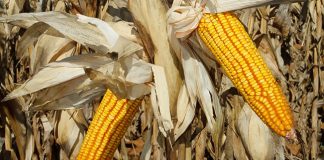
Photo: Geir K Edland | Flickr
According to Dr Gerhard Verdoorn, stewardship manager at CropLife South Africa, the Northern Cape and Eastern Cape had been particularly hard hit by this scourge.
He said the extent of this kind of poaching fell in the same category as the poaching of rhinos and other endangered animals, leaving numerous species on the brink of extinction.
In the Namaqualand region, plants in the Conophytum genus were being the hardest hit by poachers, while plant numbers in the Euphorbia genus in the Eastern Cape were dwindling alarmingly because of the illegal trade in succulents.
“Elephant’s foot (Dioscorea elephantipes), among other species, has been pushed to the brink of extinction by unscrupulous traditional healers and illegal traders.
“Corrupt nurseries also make use of poachers to steal highly sought-after species in remote and inaccessible areas and then sell the plants under false pretences,” he told Farmer’s Weekly.
Verdoorn called on farmers and landowners to remain vigilant for any evidence of succulent poaching and to report all cases, including suspicions of such crimes, to the South African Police Service and the Department of Environment, Forestry and Fisheries.
According to a recent report by Dr Carina Bruwer, senior researcher for Southern Africa at ENACT, an organisation implemented by the Institute for Security Studies in partnership with INTERPOL and the Global Initiative against Transnational Organized Crime, South Africa was home to three of the world’s 36 biodiversity hotspots.
One of these was the Succulent Karoo, which covered 116 000 km2 across the Western and Northern Cape provinces, as well as across the border into Namibia.
The Succulent Karoo was the world’s most biodiverse arid region, with many of its species occurring nowhere else on earth. It housed the planet’s largest concentration of succulents, all of which were uniquely adapted to thrive in aridity, the report said.
“The Succulent Karoo faces several human-related threats. These include climate change and habitat destruction through farming and mining activities. The region is further threatened by the increasing illegal harvesting and trade in wild plant species to supply international horticultural markets,” Bruwer said.
Key consumer markets for succulents, according to Bruwer, included countries in Asia and Europe, as well the US.
“Worryingly, illegal harvesting is also driven by demand for bigger, and by default older, plants. Some of the bigger plants could be one hundred or more years old. These would take too long to reach a considerable size under cultivation and can therefore often only be sourced from the wild,” she added.











